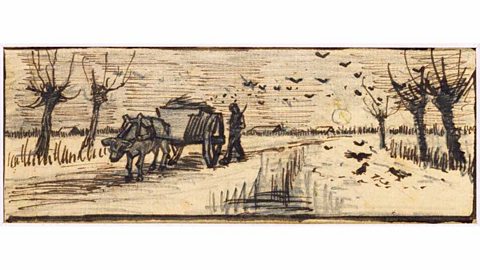Landscape
Rules of composition for landscape work

Making landscapes look interesting and eye-catching in your artwork can be achieved in a number of ways. Try to compose the work to create a balanced, attractive piece. These ideas can help when creating a landscape composition:
- the rule of thirds
- create an âsâ or âzâ shape through the artwork
- place the horizon line in the top third or lower third of the piece
- include some strong lines to guide the viewerâs eye through the landscape
- consider where to use contrasting light and dark areas
- avoid too much blank space
- consider using a colour scheme
Angles and perspective
Choosing an unusual angle or perspective in your landscape can create interesting outcomes and give a sense of depth to the work.

In the painting Ox Cart in the Snow, van Gogh used perspective to lead the viewer's eye along the ox cart's path, to which adds depth to his work.
Capturing weather conditions

Artists use different techniques and methods to capture the weather conditions in their landscape paintings, such as choosing a specific range of colours or using different textures and marks. Here are some of the ways to create different moods and atmospheres:
- have areas of light and dark that are carefully placed
- use complementary colours for light and shade
- experiment with thick paint to show brushstrokes
- use washes of colour to create atmosphere